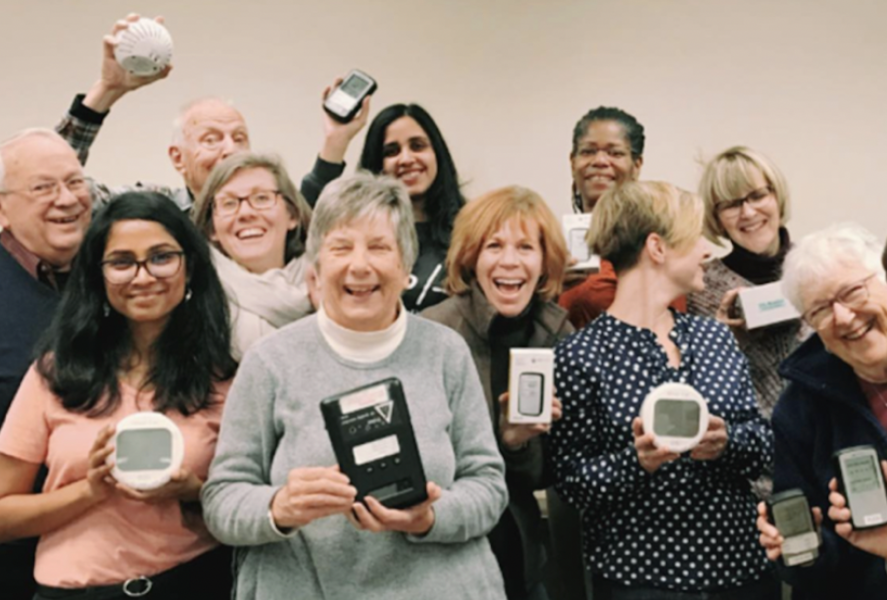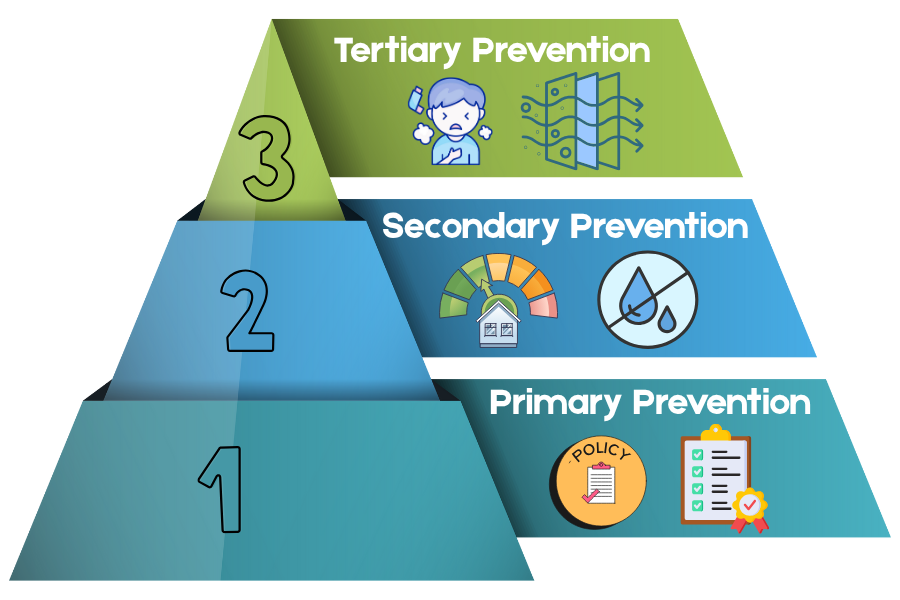Oct 21, 2025
Accessibility Ratings: A Trending Metric in Building Performance
A rapidly growing call to action within the healthy homes and building performance industries is measuring and improving home accessibility to address the needs of an aging population.
By: Carolyn Sithong
The dynamic partnership between the U.S. Department of Housing and Urban Development (HUD) and the building performance industry is advancing the landscape of healthy homes across America. By combining HUD’s national reach—through the Office of Lead Hazard Control and Healthy Homes (OLHCHH)—with the technical expertise and education initiatives of the Building Performance Association (BPA), they drive forward policies, workforce training, and best practices that improve home safety, energy efficiency, and occupant well-being. A rapidly growing call to action within this partnership is measuring and improving home accessibility to address the needs of an aging population who desire to age in place.
By 2030, more than 70 million adults in the U.S. will be 65 or older, and most will want to stay in their homes. But for many, the home can become a barrier rather than a haven—especially when features are inaccessible or unsafe. These challenges can limit independence, increase the risk of injury, and force unnecessary nursing home placement. Recognizing this, federal agencies are turning to housing professionals to help older adults age in place safely and comfortably. Programs like OLHCHH’s Older Adult Home Modification Program (OAHMP) are working with nonprofits to deliver practical, affordable changes to homes driven by the accessibility ratings provided before and after home modification services.
These home modifications—like grab bars, better lighting, or widened doorways—aren’t just about usability; they’re about autonomy, well-being, and saving healthcare costs. Establishing accessibility needs in the home prioritizes the renovation process and ensures the changes truly support the individual homeowner. Providing accessibility ratings within the consumer housing market answers the growing demand to age in place and is a crucial starting point for finding at-home solutions unbeknownst to families and their loved ones.
Federal Funding to Inform and Influence Home Accessibility Services
Since 2021, OLHCHH has funded OAHMP to address the growing need for safe, accessible housing. The program aims to help low-income elderly homeowners by offering “low cost, low-barrier, high impact” home modifications. Standardized measures and processes infused with evidence-based best practices proved the program’s success and sustainability in communities across the county, including the increase in safety and accessibility.
OAHMP’s success has helped stimulate the demand for products such as grab bars and ramps, formalized industry standards like accessibility ratings, and proved the effectiveness of client-centric home modification processes for replication in the private sector. Components of the program can be adopted by private companies across housing to ensure successful results:
- Utilize a home assessment with quantitative safety and accessibility measures, including having the homeowner demonstrate tasks.
- Engage the expertise of an occupational therapist (OT) to assess and recommend appropriate home modifications.
- Promote collaboration among the homeowner, OT, and contractor to ensure accurate modifications and optimal placement of equipment.
- Perform follow-up home assessments to evaluate improvements in safety and accessibility, identify housing trends, and measure overall program effectiveness.
What are Home Accessibility Ratings?
Google’s definition of accessibility is “the quality of being easily reached, entered, or used by people who have a disability.” Accessibility ratings determine this level of quality by way of a percentage. In the context of home, accessibility ratings can be applied to any and all activities where reaching, entering, or using is concerned. The activities are unique to the person and their environment, vary according to room, and are often associated with being meaningful and/or necessary. The quality of any activity’s performance is directly related to the accessibility rating of the environment.
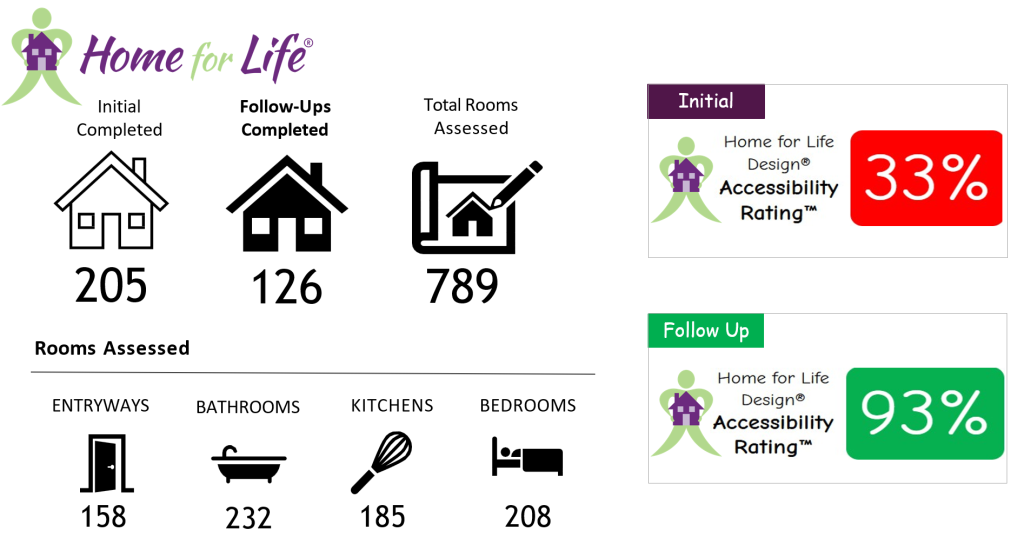
Home for Life Design (HFLD) Accessibility Ratings are an established metric used by organizations to track the success of aging in place programs such as OAHMP. A recent study out of Huntington University took a closer look at OAHMP grant recipients and their home accessibility before and after modification services. Participants averaged an overall 51% increase in home accessibility and a 48% gain in reported feelings of safety. The highest HFLD Accessibility Rating was indicated in the bathroom, while the highest gain in safety was noted at the entryway. HFLD Accessibility Ratings can be gathered in each room of the home and are objectively scored by the home assessor using a standardized method. As the homeowner moves through different areas of the home, barriers are identified and recorded in real time and used to determine accessibility rating percentages. These overall findings help prioritize and map out rooms in greatest need of accessibility modifications and can be measured before and after home modifications.
Importance of Accessibility Ratings for Providers
Program Sustainability
The Finger Lakes Community Action’s Safe Homes program is an established home modification service serving rural upstate New York. In 2021, the program received OAHMP funding and implemented grant requirements including using HFLD Accessibility Ratings before and after home modifications and working with an OT. These value-added components strengthened community impact with data and expanded home modification solutions for a variety of older adults.
In one home, the front entryway scored a 0% accessibility rating, leaving the homeowner unable to leave their home without handheld assistance from a spouse. In the bathroom, there was a 75% accessibility rating based on mobility challenges demonstrated by the homeowner during tub-shower and toilet transfers.
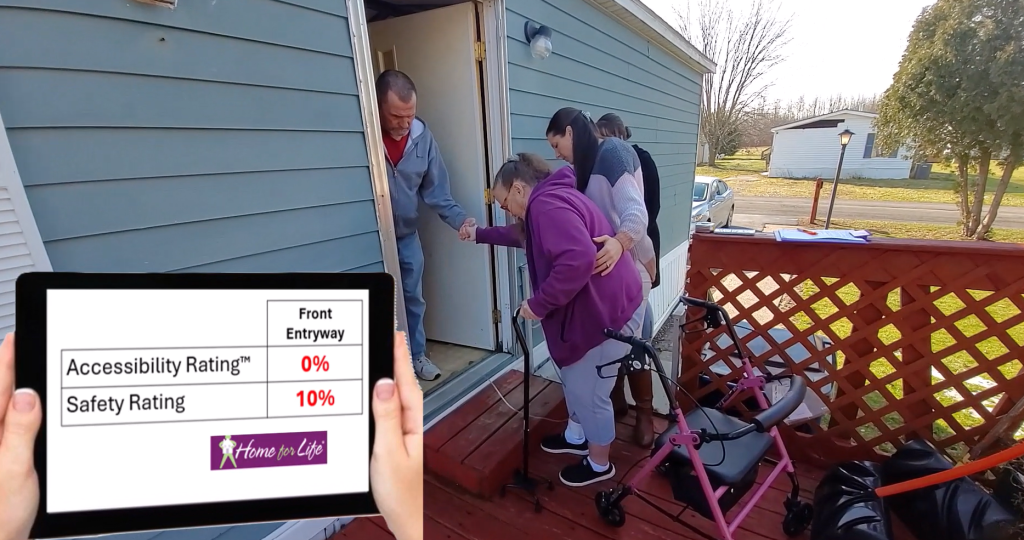
Wanda Felix, the Director of Safe Homes commented, “Home for Life Design’s Accessibility Ratings helped us to prioritize where to start each home modification project. In this case, it was the entryway. We used OAHMP funding to install the ramp and increased the accessibility rating to 100%.”
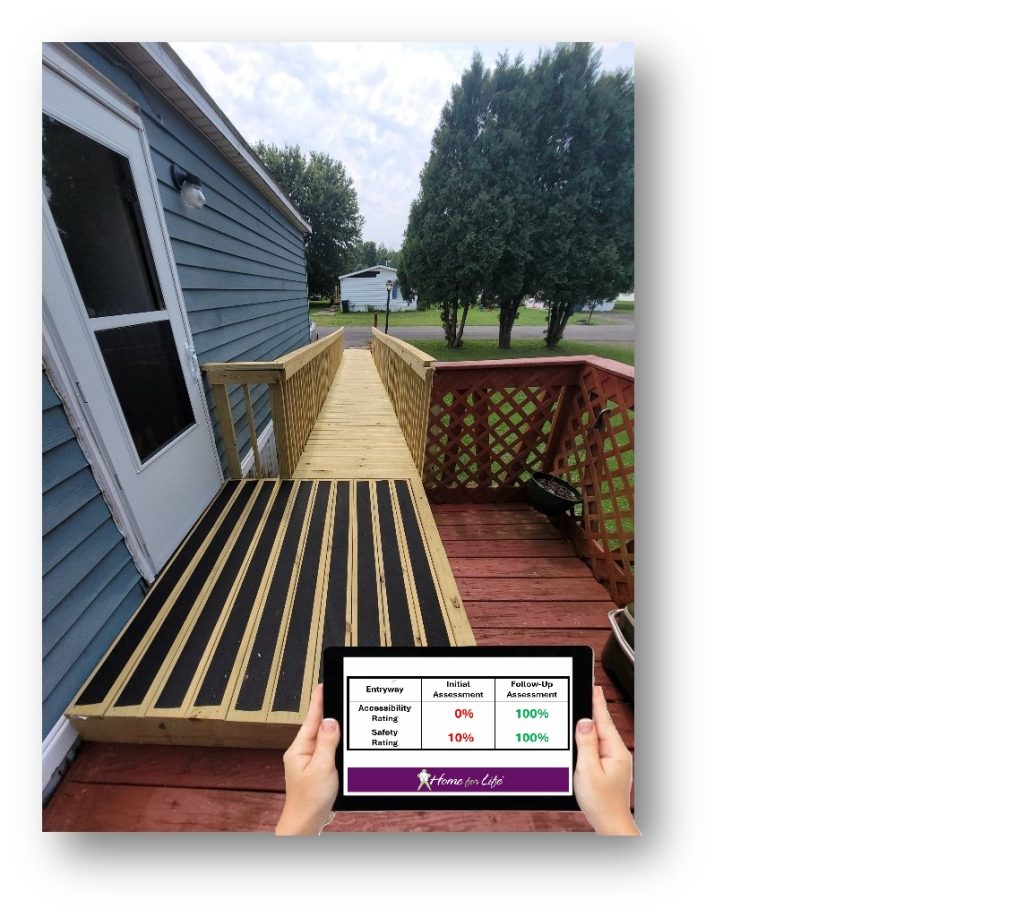
Wanda continued, “Michelle [the OT] also made suggestions for the bathroom, however, OAHMP funding was mostly spent on the cost of the ramp. Once the OAHMP grant was completed, we knew we had unfinished work in the community. We referred to the database that recorded where work needed to be completed and what needed to be installed. The HFLD data was our selling point to the new funder and helped ‘seal the deal,’ allowing the program to continue.”
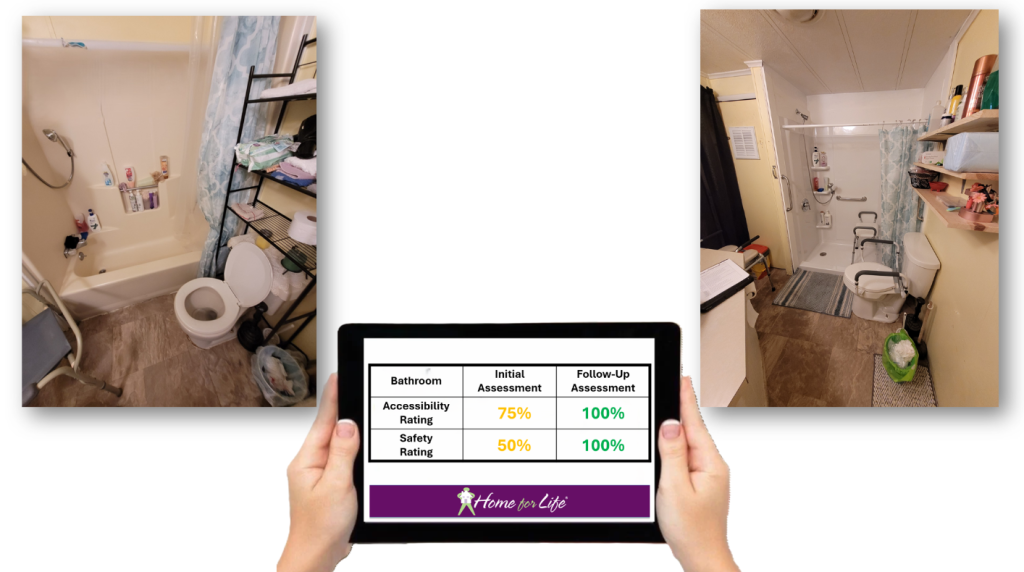
Knowing Where to Start
As many homes lack accessibility features, the home assessment process can be daunting. Having a built-in methodology for gathering accessibility ratings helps initiate an easy, standard workflow across a nationwide userbase. Michelle Graves, OT, who provides accessibility in hundreds of rooms throughout homes annually commented, “Moving through each room and gathering the accessibility ratings with the person helps me deliver a thorough assessment. I have a good routine of asking the person to show me how they do their activities. Being able to measure the accessibility ratings after the home mods helps me prove the value of the service the organization is providing.”
Joel Ambrose, President of HandyPro International, has witnessed firsthand the positive impact his company has on people’s lives. With the introduction of accessibility ratings, their existing service model now includes measurable data to further enhance and validate their work. Joel stated, “They helped us bring something tangible and powerful to the conversation with the homeowner. When using HFLD, I’m able to show real safety and accessibility ratings on their current home. From the entryway to the bathroom, we listen as customers share their concerns—and the software does the rest. Data gives HandyPro professionals assurance that these modification services are doing exactly what they’re intended to do. It’s not just about upgrades—it’s about restoring confidence and giving people back their independence.”
Hold the Moving Van: The Need Recognition for Accessibility Ratings
Moving and downsizing were once common among older adults. Today, market researchers indicate a strong and growing demand to stay at home. The decision to age in place is both personal and practical. Sixty-five percent of seniors have lived in their current homes for over 10 years, increasing attachment to, and security with, home familiarity. Limited housing availability challenges the idea of relocating and necessitates facing current living situations with a need to modify.
Seventy percent of seniors live in homes built before 1990 when accessibility became an established norm for building spaces. Inaccessible housing features, or barriers, commonly include steps to enter, bathtub showers, and narrow doorways. All have a direct impact on functional mobility as a person ages, compromising important daily living activities or requiring outside assistance. When individuals encounter these challenges and acknowledge the constraints of available housing options, the need to adapt their home becomes apparent. Knowing a home’s accessibility rating is an important determinant for healthy aging in place. This rating can be a useful benchmark when considering and comparing the costs of assisted living, in-home care, retirement communities, or nursing homes. Improvement in accessibility ratings with low-cost modifications, as seen in OAHMP, proves aging in place is the most economical in comparison to traditional long-term living options. So how can we create demand in the housing market for home accessibility ratings?
Making Aging in Place Less About Aging and More About Place
While aging in place is in demand, the “aging” part of it isn’t. Providers offering aging in place products and solutions often face reluctance from consumers who are hesitant to identify as “getting older.” Ideally, purchasing products would not be associated with age, but age-related biases will frequently influence transactions. However, with accessibility ratings becoming a norm, the problem of aging can stop here, at least hypothetically.
The National Center for Healthy Housing established Healthy Home Principles, derived from OLHCHH to better equip homes for healthy living, including, “Accessible.” These principles, driven by the building performance industry, help the public understand that home environments can be healthy as people can be healthy.
As home performance contractors know, a house can be diagnosed to effectively treat problems that need intervention, similar to diagnosing a person who is feeling sick and needing a prescription. For example, poor air quality in a home has an impact on a person’s capacity to breathe. Understanding the home’s air quality rating helps diagnose the problem (increased allergen content) and informs a solution (air filter replacement). The homeowner concludes that they were not the culprit of their breathing ailment, it was caused by the environment. This same example should be applied to aging in place. A person experiences feeling old or disabled when they can no longer perform meaningful activities (entering and exiting the front door), caused by barriers in the home (steps) which impact accessibility. The entryway’s accessibility rating helps inform the need for a solution, like a ramp, for the homeowner, to increase the ability to go out into community.
In both experiences of disability, the root cause was the home environment and not something personal. If the building performance industry offered accessibility ratings for homeowners, we could work to eliminate disability and shift the problem of aging-related challenges from the person to the place—which can be fixed! What’s more, when the industry educates consumers on how a home environment either enables or disables important activities of daily living, accessibility ratings become as important as knowing there is quality air to breathe. Unveiling the home as the culprit of disability and not the aging process is key for aging in place market messaging. It can help mitigate ageism and increase demand for services.
Breaking Barriers with Ageless Solutions
Aging and housing statistics indicate an important market inflection point as homeowners weigh, “Should I stay, or should I go?” As the aging population begins demanding accessibility ratings, the building performance industry should be at the forefront challenging and redefining what it means to grow older at home. By treating the home as a dynamic environment-one that can be measured, modified, and improved for accessibility, we shift the focus from age to agency. The next professional move is clear: Educate and generate demand for these ratings within the aging in place housing market, so every home can become accessible, healthy, and safe for long-term independent living.
To learn more about how accessibility ratings can be integrated into weatherization assessments, read Weatherization and Accessibility: The Emerging Frontier.




